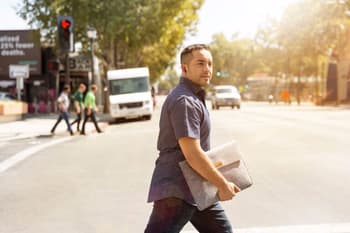You have been chasing a debt, and now you have discovered that the person who owes you money is bankrupt. What does that mean, and will your debt ever be paid? This article will explain what happens when the person who owes you money is bankrupt and the steps you should take to make sure your debt gets paid.
What is Bankruptcy?
A person is bankrupt when a court orders they are unable to pay their debts. Bankruptcy can be either:
- voluntary, meaning the person applies for bankruptcy themselves; or
- involuntary, meaning a creditor (or another person owed money) applies for the bankruptcy.
Once a person is deemed bankrupt, they are released from paying their debts, and a trustee is appointed to control the bankrupt person’s affairs. The trustee will investigate the bankrupt person’s financial situation and sell any property to pay creditors. Bankruptcy usually lasts for three years and one day. However, the bankruptcy trustee may extend this period if they need to make further investigations or the bankrupt person does not follow the necessary rules. An example of one of these rules is that the bankrupt person must assist the trustee with all their investigations.
What Type of Creditor Am I?
There are generally two types of creditors:
1. Secured Creditors
Secured creditors hold a security interest, such as a mortgage, in some of the company’s assets. Any security interests over personal property will be registered on the Personal Property Securities Register (PPSR);
2. Unsecured Creditors
Unsecured creditors have no security interest in the company’s assets and include customers, trading partners and employees.
You are most likely an unsecured creditor. If this is the case, you will only be paid after the bankrupt person makes payments to secured creditors.
Continue reading this article below the formWhat Do I Need to Do?
You may not continue any legal action against a person once they are bankrupt if you are an unsecured creditor. If you have started any legal proceedings, you will need to discontinue these. It is essential to let the bankruptcy trustee know you are a creditor and provide them with details of your debt. You should:
- contact the trustee and advise them that the bankrupt person owes you a debt;
- give them full details of the debt owed. They will provide you with a formal proof of debt form to complete and ask you to provide copies of any relevant documents that show the debt. These documents might include invoices, statements and any agreements or credit applications. This process is called proving your debt; and
- ask the bankruptcy trustee for the status of their investigations to date. They may be able to give you an idea of whether creditors are likely to receive any dividends.
When Will I Get Paid?
The bad news is that there is no guarantee you will be able to recover the debt. You will only get paid if there are funds left over after making any other required payments, such as payments to secured creditors. If there are insufficient funds to pay all unsecured creditors, then creditors receive a share of the remaining funds on a pro rata basis. This means that you may receive only a portion of the debt owed. If there are no funds available, you may receive nothing.
Key Takeaways
Discovering a person who owes you money is bankrupt does not mean that you will never get paid. You may get paid from available funds in the bankrupt person’s estate, but you need to make sure the bankruptcy trustee is aware of your debt. To increase your chances of recovering the debt, you should:
- contact the trustee as soon as possible;
- give them full details of your debt; and
- keep in touch with them to find out the likelihood that you will get paid.
If you have any questions about the bankruptcy process or recovering a debt, you can contact LegalVision’s bankruptcy lawyers on 1300 544 755 or fill out the form on this page.
We appreciate your feedback – your submission has been successfully received.











